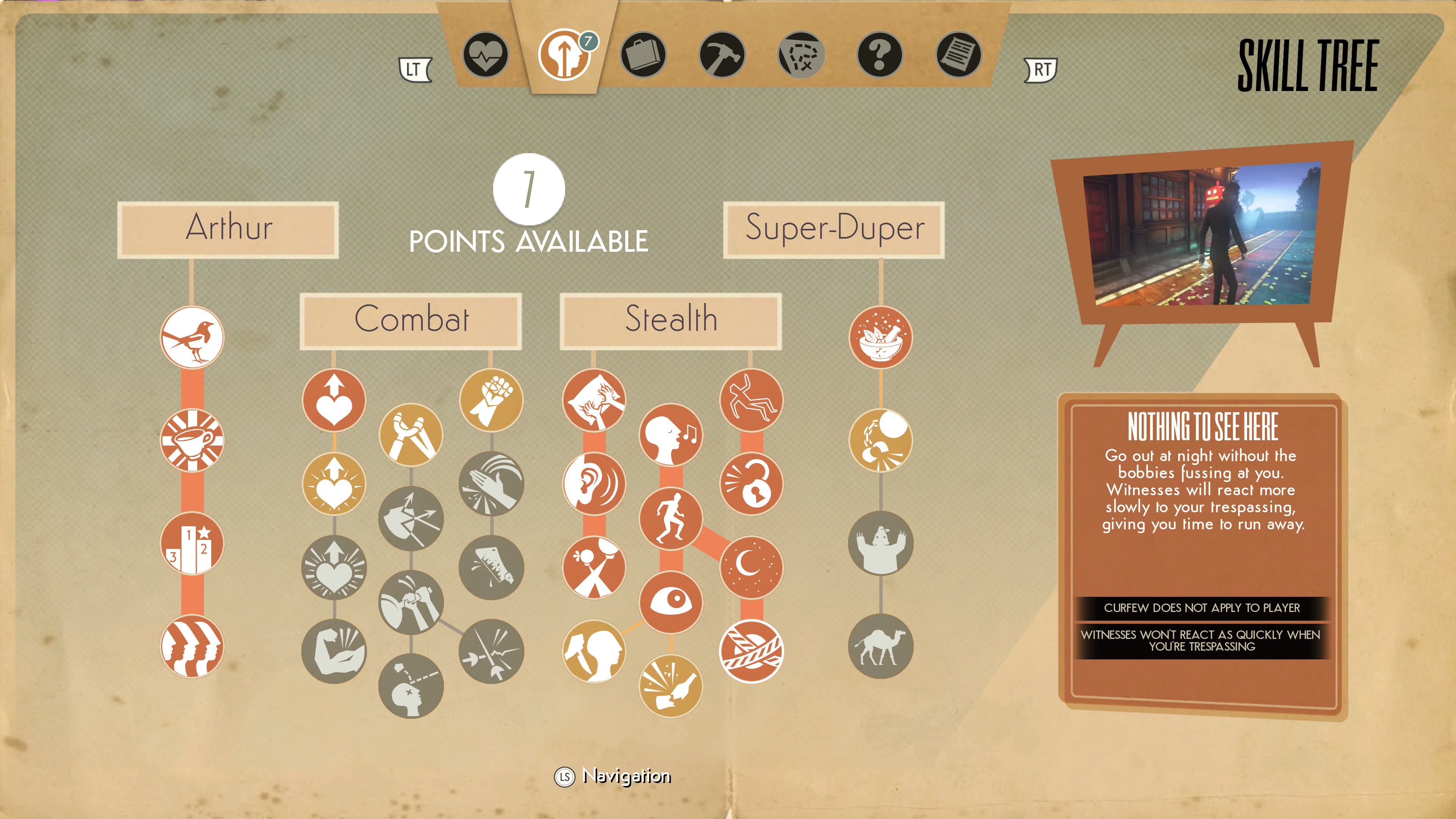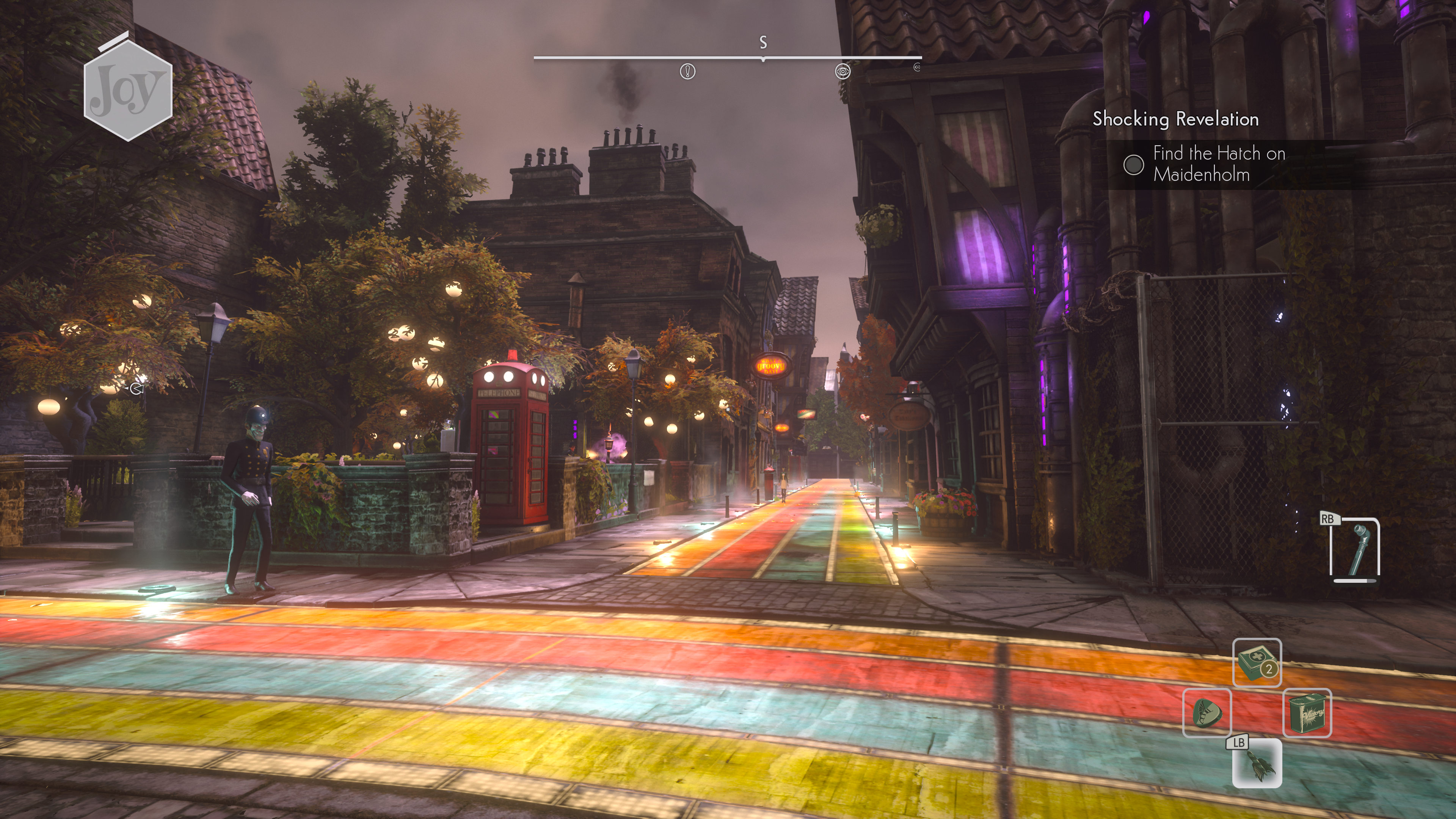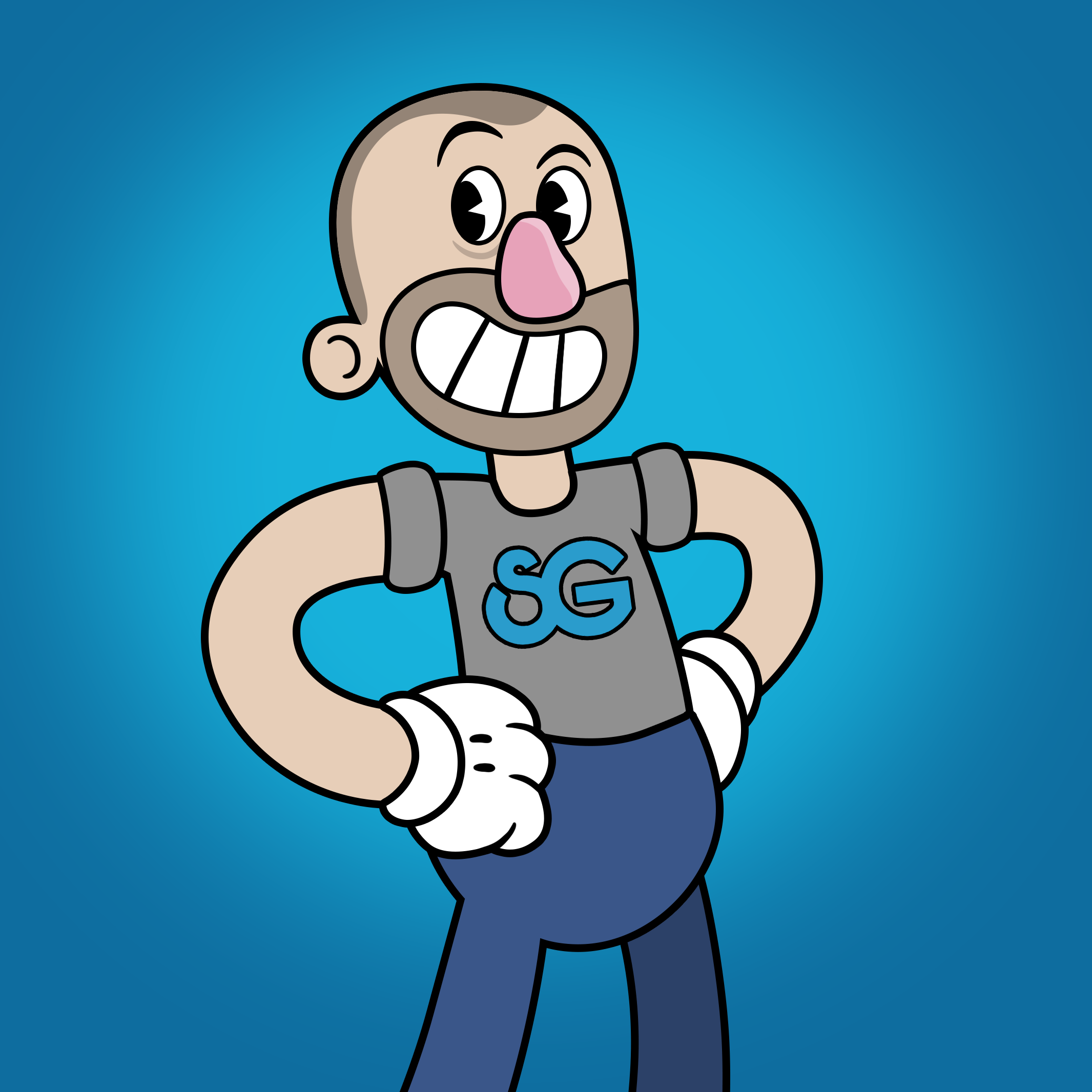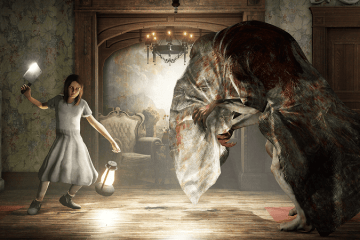We Happy Few has me perplexed. On one hand, upon booting it up for the first time you rather quickly notice a few oddities including some funny bugs and a sense of roughness around the edges. On the other hand, I’ve been playing it since release last week and when I’m not playing it, I’m wanting to. After spending over 30 hours with the title, the most accurate description I’ve come up with is that We Happy Few is a AA game with AAA aspirations. Let me explain.
To note, I’m writing solely about We Happy Few as it exists today and not its time in early access or the original plans for the title.
For the uninitiated, We Happy Few takes place in England in 1964. While technically post-WW2, it’s an alternate history where the Allies never formed and Germany ended up occupying Britain. The story focuses on a city named Wellington Wells where a drug simply titled “Joy” is expected to be taken by all residents. By taking Joy, all of the residents have forgotten the pains of the past and are living in a constructed utopia. All is not as it seems however and taking the role of three unique characters, you will uncover the horrors that have not only occurred, but are actively occurring.

You begin by assuming the role of Arthur Hastings. Now off your Joy, your memories are returning. You recall that you were separated from your brother Percy who was forcefully sent to Germany along with seemingly all of the children of Wellington Wells. You set out, determined to leave the city to find him. However, you begin outside of the “civilized” city limits with other residents who are off their Joy and thus referred to as “Downers”. Downers have a deep seeded dislike for well-to-do residents and thus you need to make sure you blend in otherwise you’ll be quickly targeted and “corrected” by the locals. And so your long journey begins.


To succeed on your voyage through the city and eventually beyond it, you’re introduced to several game mechanics foremost of which is crafting. It plays an integral role on your journey as it ties into nearly everything you’ll use as a player including clothing, food, health items, weapons, and gadgets. Similar to Bioshock, you’re able to scavenge all sorts of items throughout the environment from rotten food to weapons. However, using these items you are then able to craft simple goods on the fly or more complex objects at workbenches and chemistry sets which are typically found in hideouts. Depending on your location, environment, and mission you will need to manage your clothing, accessories, and gadgets which as a system I found to be well implemented. The gameplay loop of unlocking new hideouts, finding new blueprints, and subsequently crafting more complex objects fostered the sense of progression.
Originally a core concept when We Happy Few launched in early access, the survival aspect remains partially intact as well. You manage fatigue, hunger, and thirst though rather than it being a matter of life and death, the game treats it as more of a buff and debuff system thus impacting the effectiveness of your player. While it doesn’t degrade the experience greatly and it’s very easy to manage, I do wonder if it should have been done away with entirely. At times, it seems to be more of an annoyance than anything else and the fact that you can unlock a skill later on to remove the negative impacts of all three only further cements my feeling.

The last major concept introduced to the player is stealth. I almost always play games down the stealth path when possible, but as with many aspects of We Happy Few, there are positives and negatives to touch on. As with many titles, you are able to crouch walk silently, hide in certain bushes, complete silent takedowns, and hack/lockpick your way into many things. There’s some intuitive design work done by Compulsion Games here too, such as being able to see footprints of A.I. figures around you and clearing your vision while hiding in bushes. There is also an entire third of your skill tree dedicated to stealth that provides some very meaningful perks. However, due to some sub-par A.I. and a lack of polish on the awareness of enemies, you’ll often be confused as to when you’ve failed or be surprised when you’ve succeeded. With some missions relying on stealth, it can be a little cumbersome at times.

We Happy Few’s dichotomy between brilliant and mediocre though, is best on display when examining Wellington Wells itself. The streets and buildings are captivating at times and will feel familiar to anyone who’s walked the city streets around London. The way Compulsion Games has integrated the framework of the narrative into the city while simultaneously associating the vibe of the 1960s is admirable. The outskirts of the city areas are also well modeled and further capture the sense of post-war, and in this case post-joy, despair. I certainly found myself taking more screenshots than normal as I enjoy admiring art direction within games and We Happy Few is memorable in that regard. However, once you spend a little more time in Wellington Wells and develop a feel for the areas, you begin to notice the cracks in the seams. Building assets are reused heavily with the majority of the buildings merely being solid blocks with no life and no entry points. Save for the dedicated buildings for the main mission, the few buildings you can access are laid out in generally similar fashions and take minimal time to explore. The same holds true for the wilderness in that it’s largely the same throughout and while there are small side missions scattered around the island, many of them are simple fetch quests that hold little consequence. Even the character models are widely reused with repeated NPCs on nearly every street. I have to imagine these design flaws are due to the carry-over of the game’s early procedural generation direction.


An area where We Happy Few truly shines however, is in story-telling. With Arthur’s story consuming the bulk of the playtime and thus narrative delivery, it was important that Compulsion Games nailed his journey. Thankfully they did as Arthur’s voice talent is excellent and his self-narration throughout not only the story elements, but side quests and general exploration are very well done and endear you to him. The voice acting throughout is accomplished and definitely one of the highlights of the title. What I admired most is how the British sense of humour (yes that’s spelled correctly spellcheck, leave me alone) and phrases are captured as I would expect no less from a British developer. When Arthur finished an early battle and stated “Now we see the violence inherent in the system”, I had a big smile on my face.
Following Arthur’s Act are a shorter Act 2 and 3 in which you assume the roles of Sally Boyle and Ollie Starkey ; two characters who play rather significant roles in Arthur’s journey. These Acts are treated as unique experiences within which you traverse the same environments from differing perspectives. Each character has unique abilities and attributes thus allowing for slightly different play styles as well. I found this to be an interesting approach by Compulsion Games and one that is not easy to implement successfully. I’m happy to say that while not revolutionary, it adds a lot of flavor to the experience and context where it might have been lacking initially. Though I do find having to gather new crafting materials and retread my footsteps a little dull. I wonder if the game would have been better served to alternate between characters throughout a singular playthrough. To be fully transparent, I am still working my way through Sally’s journey at this point in time and will update this article once fully finished.
What’s been most memorable for me however, is the deeper, philosophical message within the game that is uncovered along the way. While the game’s presentation is for the most part colorful and light-hearted, it masks a serious, gut-wrenching tale about loss, grief, and regret. One of the quotes used throughout the title that speaks to this eloquently is “Happy is a country with no past”. The underlying tones surprised me, and I believe that if Compulsion Games leaned into them a little more heavily up front, it would have benefited the overall reception to the game. As it stands, the presentation either by design or by accident, is yet again a wonderful representation of We Happy Few itself.


I haven’t been more torn by a game in recent memory. On the one hand, We Happy Few annoys and frustrates me at times, it’s shallow in areas I wish it wasn’t, some of the mechanics need more polish, and I wish the world was more fleshed out. At the same time, I’ve adored playing it and it oozes personality and charm. It’s a very difficult game to recommend as I believe finding enjoyment in it depends upon an individual’s ability to overlook flaws to find the diamond within the coal.

It’s worth mentioning that Compulsion Games developed We Happy Few with a team of only 35 people and the aid of a Kickstarter campaign. With the company having now been acquired by Microsoft, they will have resources at their disposal far beyond what they’ve had previously. The ideas behind We Happy Few are brilliant, and I hope more than anything this is not a singular experience that is merely lost to the words “cult classic” in the following years. With the proper funding and development resources, this series has blockbuster potential and I hope we eventually see it. For now, I’m afraid we’ve come to the end of our time.
@Porshapwr



